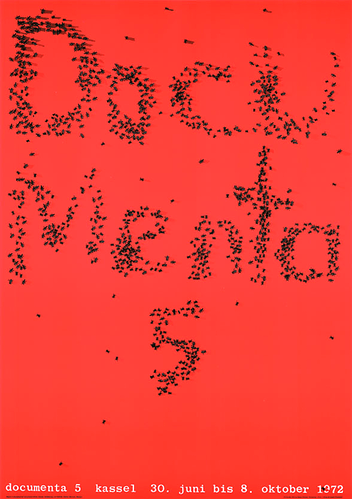As part of Mousse’s new issue, Dieter Roelstraete reflects on the year 1972–his birth year, and also the year of documenta 5, curated by everyone’s favorite dead Swiss curator Harald Szeeman. 1972 was also the year Pruitt Igoe was destroyed with dynamite and the release of the movie the Godfather. Read Roelstraete in partial below, or in full via Mousse.
A 1972 words long investigation of 1972: the year in which author Dieter Roelstraete was born, under the sign of the groundbreaking exhibition documenta 5 organized by Harald Szeemann in Kassel. Those same twelve months gave birth to Miles Davis’s pivotal funk-jazz masterpiece Across the Corner, the Feminist Art Journal, and the beginnings of modern finance, which arose from the ruins of the Bretton Woods system of international monetary management.
Anyone lucky enough, like I have been (so far), to be involved in the organization of a documenta—ours the upcoming, 14th edition, scheduled to take place in Athens as well as my provisional hometown of Kassel—must inevitably contend with that hallowed exhibition’s storied history, starting with Arnold Bode’s beginnings in 1955 all the way to its spectacular last instalment in 2012—the exhibition to end all exhibitions as overseen by Carolyn Christov-Bakargiev. The defining landmark in many respects, however, remains documenta 5, organized by Harald Szeemann in 1972—its catalogue the one documenta publication that seems impossibly to come by in a city otherwise awash, it often seems, in documenta 6, 7, 8, and 9 memorabilia. Perhaps it is the simple fact of working under the watchful eye of documenta 5’s iconic, Ed Ruscha-designed poster, sporting the opening and closing dates of June 30 and October 8 respectively, that has fed a long-standing world-historical fantasy of mine according to which “the contemporary”, exemplified first and foremost by its crystallization in the field of art as represented by Szeemann’s epochal project (Beuys, LaMonte Young, Photorealism, Wiener Aktionismus, and one as of yet unnamed icon of Institutional Critique who shall be returning to Kassel in 2017) could be said to have begun in 1972.
